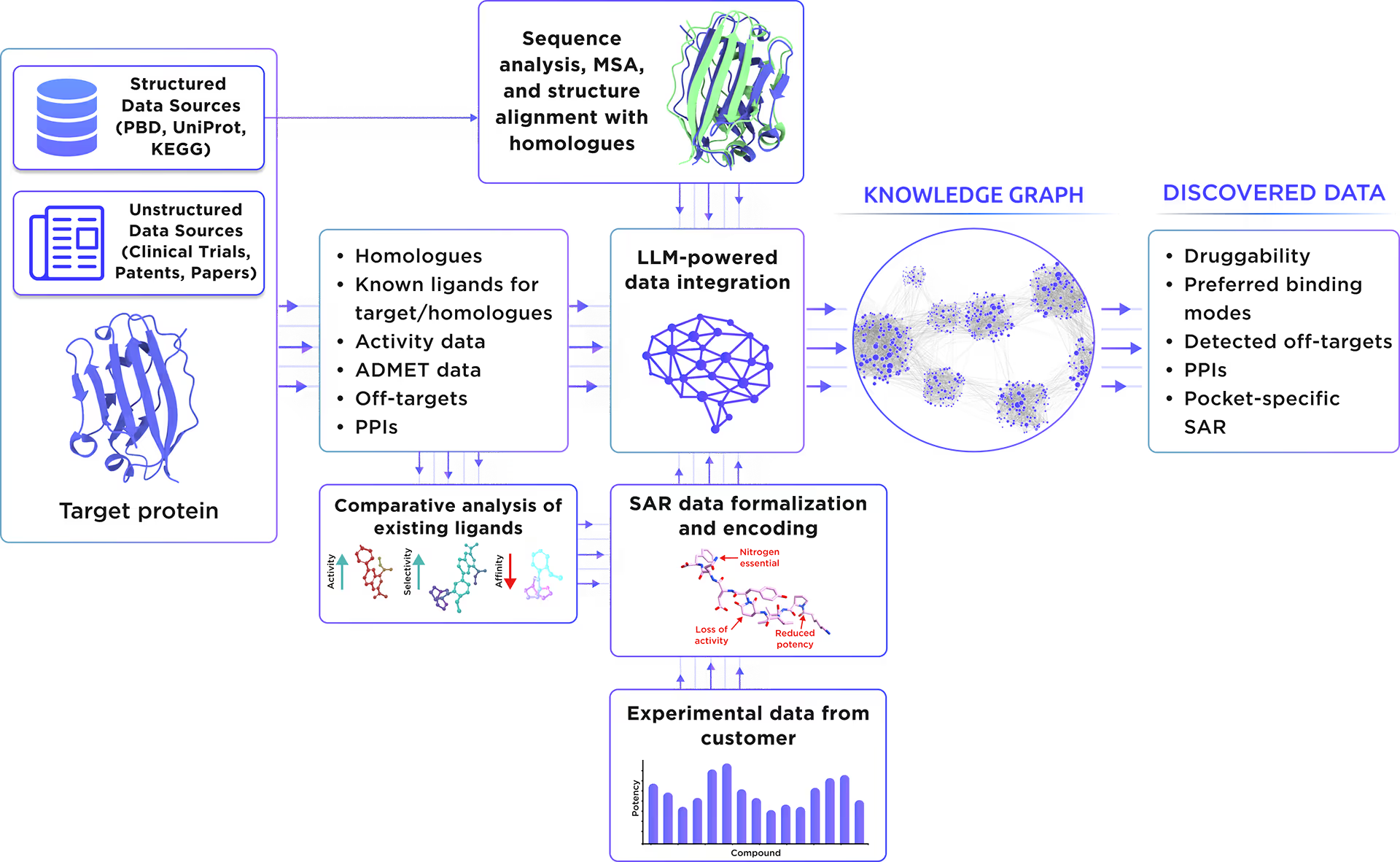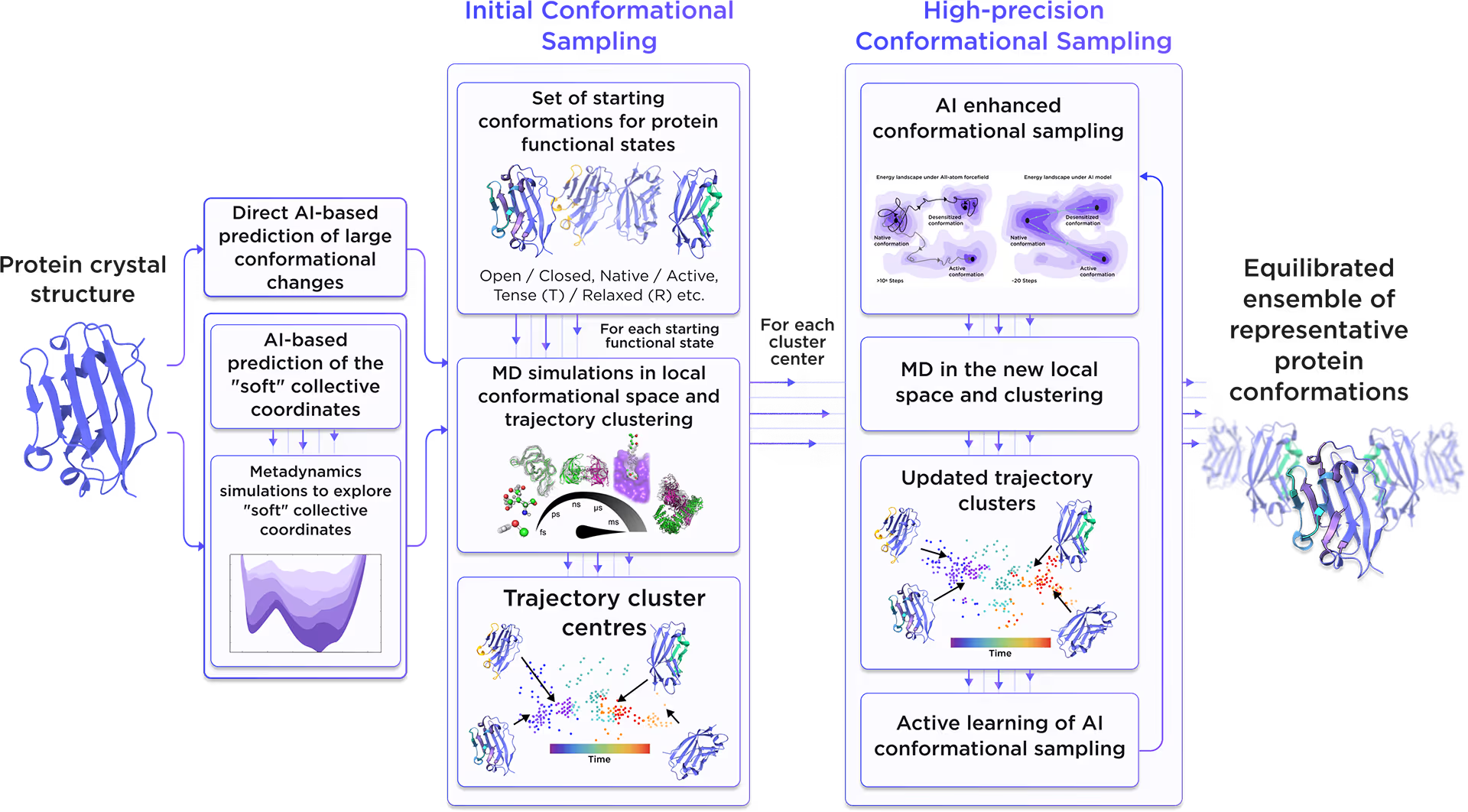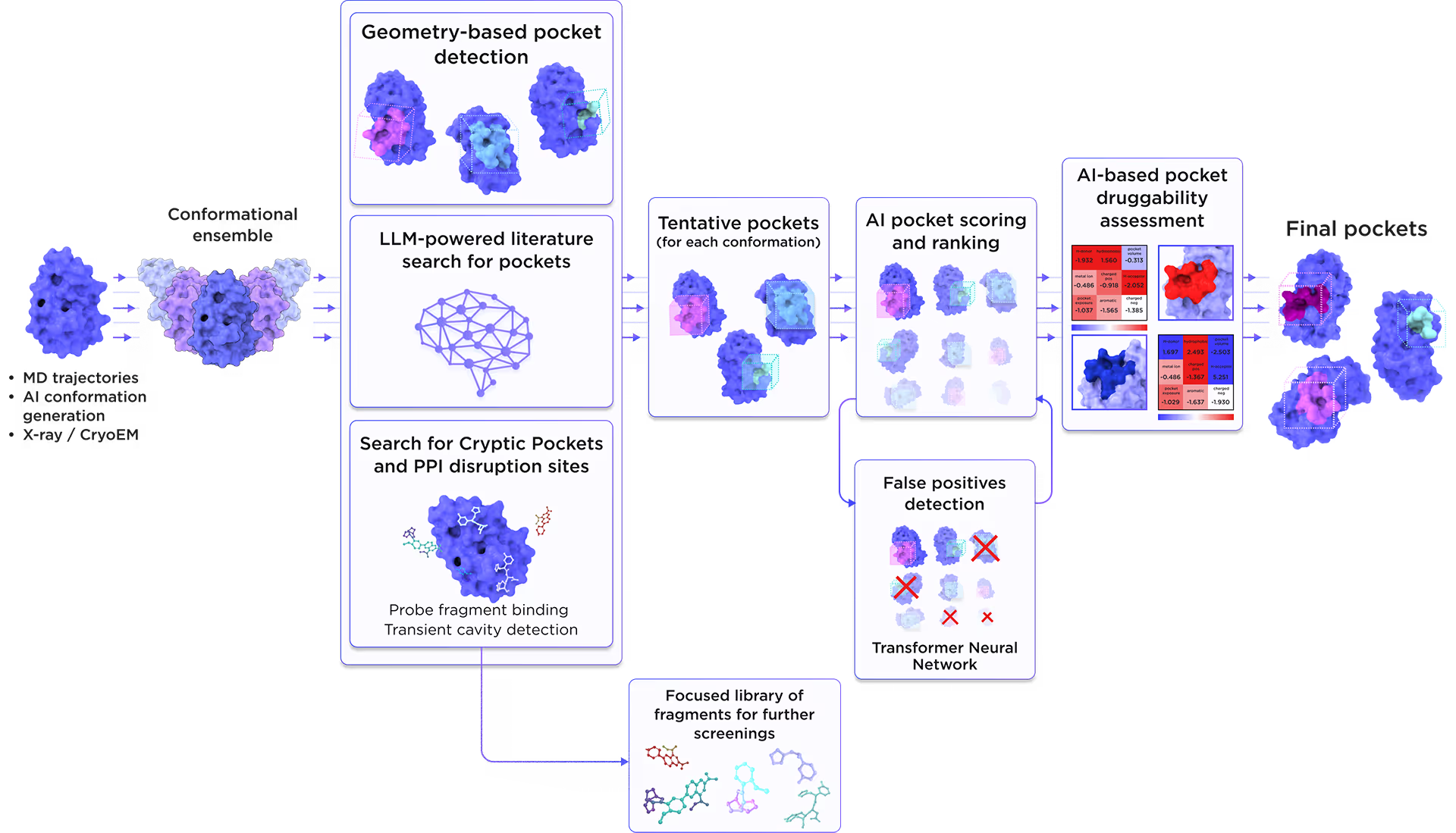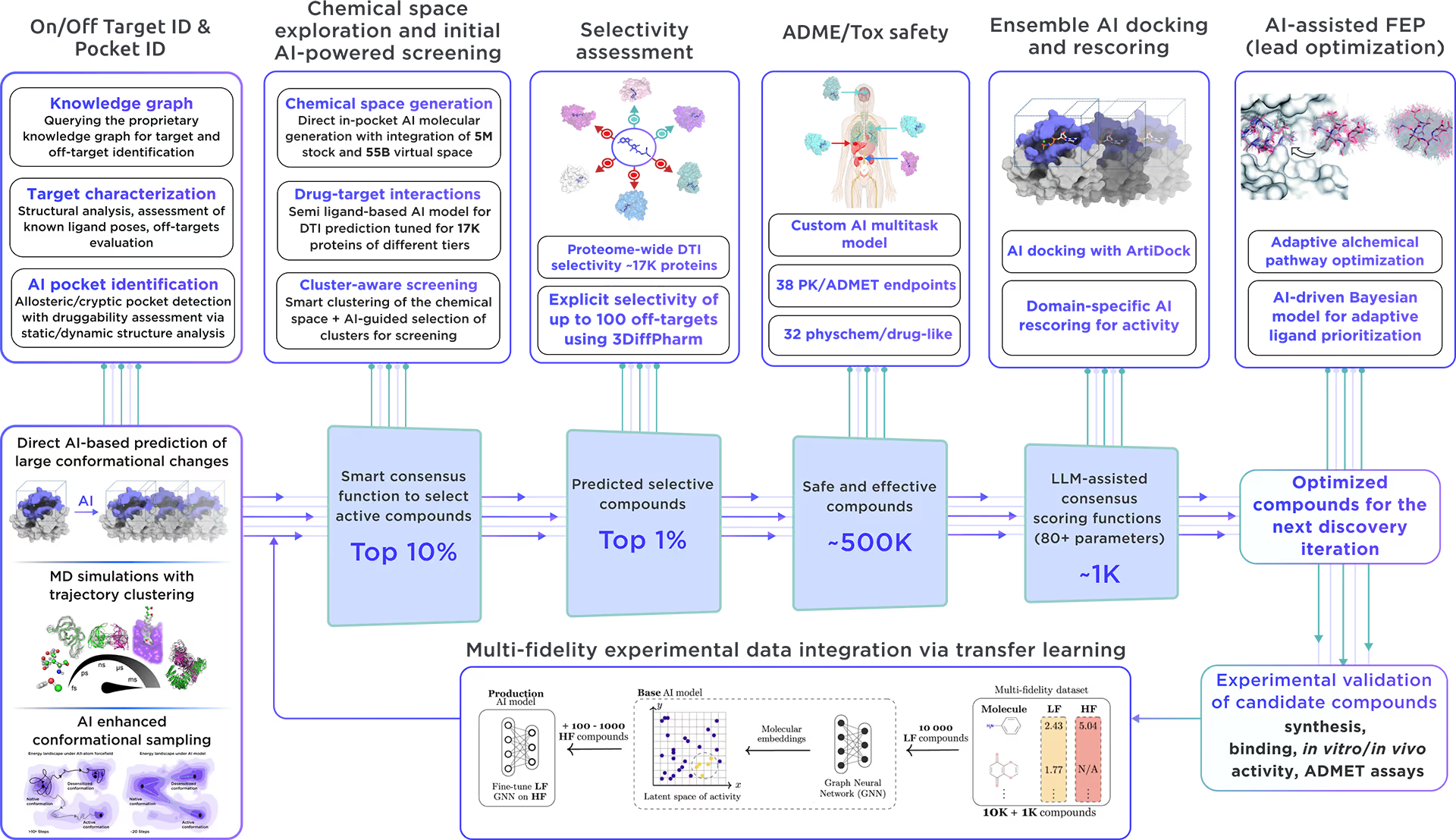

Available from Reaxense
This protein is integrated into the Receptor.AI ecosystem as a prospective target with high therapeutic potential. We performed a comprehensive characterization of Transmembrane protein 43 including:
1. LLM-powered literature research
Our custom-tailored LLM extracted and formalized all relevant information about the protein from a large set of structured and unstructured data sources and stored it in the form of a Knowledge Graph. This comprehensive analysis allowed us to gain insight into Transmembrane protein 43 therapeutic significance, existing small molecule ligands, relevant off-targets, and protein-protein interactions.

Fig. 1. Preliminary target research workflow
2. AI-Driven Conformational Ensemble Generation
Starting from the initial protein structure, we employed advanced AI algorithms to predict alternative functional states of Transmembrane protein 43, including large-scale conformational changes along "soft" collective coordinates. Through molecular simulations with AI-enhanced sampling and trajectory clustering, we explored the broad conformational space of the protein and identified its representative structures. Utilizing diffusion-based AI models and active learning AutoML, we generated a statistically robust ensemble of equilibrium protein conformations that capture the receptor's full dynamic behavior, providing a robust foundation for accurate structure-based drug design.

Fig. 2. AI-powered molecular dynamics simulations workflow
3. Binding pockets identification and characterization
We employed the AI-based pocket prediction module to discover orthosteric, allosteric, hidden, and cryptic binding pockets on the protein’s surface. Our technique integrates the LLM-driven literature search and structure-aware ensemble-based pocket detection algorithm that utilizes previously established protein dynamics. Tentative pockets are then subject to AI scoring and ranking with simultaneous detection of false positives. In the final step, the AI model assesses the druggability of each pocket enabling a comprehensive selection of the most promising pockets for further targeting.

Fig. 3. AI-based binding pocket detection workflow
4. AI-Powered Virtual Screening
Our ecosystem is equipped to perform AI-driven virtual screening on Transmembrane protein 43. With access to a vast chemical space and cutting-edge AI docking algorithms, we can rapidly and reliably predict the most promising, novel, diverse, potent, and safe small molecule ligands of Transmembrane protein 43. This approach allows us to achieve an excellent hit rate and to identify compounds ready for advanced lead discovery and optimization.

Fig. 4. The screening workflow of Receptor.AI
Receptor.AI, in partnership with Reaxense, developed a next-generation technology for on-demand focused library design to enable extensive target exploration.
The focused library for Transmembrane protein 43 includes a list of the most effective modulators, each annotated with 38 ADME-Tox and 32 physicochemical and drug-likeness parameters. Furthermore, each compound is shown with its optimal docking poses, affinity scores, and activity scores, offering a detailed summary.
Transmembrane protein 43
partner:
Reaxense
upacc:
Q9BTV4
UPID:
TMM43_HUMAN
Alternative names:
Protein LUMA
Alternative UPACC:
Q9BTV4; Q7L4N5; Q8NC30; Q96A63; Q96F19; Q96JX0; Q9H076
Background:
Transmembrane protein 43, also known as Protein LUMA, plays a pivotal role in maintaining nuclear envelope structure and organizing protein complexes at the inner nuclear membrane. It is essential for retaining emerin at the inner nuclear membrane and modulates innate immune signaling through the cGAS-STING pathway. Additionally, it acts as a critical signaling component in NF-kappa-B activation, positioned downstream of EGFR and upstream of CARD10. It also contributes to passive conductance current in cochlear glia-like supporting cells, necessary for hearing and speech discrimination.
Therapeutic significance:
Transmembrane protein 43 is implicated in several diseases, including Arrhythmogenic right ventricular dysplasia, familial, 5, Emery-Dreifuss muscular dystrophy 7, autosomal dominant, and Auditory neuropathy, autosomal dominant 3. These associations highlight its potential as a target for therapeutic strategies aimed at treating congenital heart disease, degenerative myopathies, and sensorineural hearing loss.